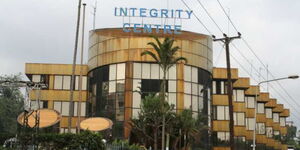Activists have raised concerns over the construction of the Expressway along Mombasa road which has seen the clearing of trees for the megastructure.
In a statement sent to newsrooms, a coalition of social justice centres and civil society organizations filed an appeal with the National Environment Tribunal (NET) challenging the decision by the National Environment Management Authority (NEMA) to authorize construction of the road over extensive destruction to the environment.
The group argued that the National Environmental Management Authority (NEMA) granted the license without allowing adequate public participation and the Environmental Impact Assessment (EIA) conducted by the developer was insufficient.
The activists also faulted developers as they did not fully consider alternative plans, and that NEMA did not impose restrictions necessary to limit the ecological impact of the expressway.
"Although we filed the appeal over a week ago, the National Environment Tribunal is yet to issue a stop order that would halt construction until the appeal is resolved.
“Our development options must keep within the law and all decisions need to be informed by adequate public participation to ensure sustainability. We have every confidence that the tribunal will consider our appeal in a manner that upholds the law,” Senior Programme Officer at Natural Justice Mark Odaga stated.
The development highlights the threats green spaces face in the city in the wake of development projects.
An initial plan for the Expressway showed that a few acres would be hived off Uhuru Park. However, following uproar led by the Green Belt Movement, Wangari Maathai Foundation and other eminent conservation and rights-based organizations, KeNHA assured that the design of the road had been changed to ensure that it does not affect Uhuru Park.
"Despite these assurances, the Environmental and Social Impact Assessment Study Report (ESIA Study) still suggests that there will be significant impacts on Uhuru Park and other ecologically sensitive areas around the Thika Interchange, Chiromo, Nyayo Stadium, and the Railways Golf Club," the activist organisations noted.
On his part, Wycliffe Matika, Green Belt Movement, Deputy Director observed that "Conservation of Uhuru Park among other green spaces honours the legacy of Professor Wangari Maathai, and embodies the courage to stand up for one's beliefs, one of the core values on which Green Belt Movement is anchored."
“We cannot compromise or sacrifice the green spaces in our cities that we know build resilience, at this critical time. Our green space is more important than ever, and we must vigilantly protect it," Head of Campaigns at the Wangari Maathai Foundation Elizabeth Wathuti added.
The construction of the expressway is expected to cost about Ksh62 billion and this amount as a long term debt is expected to attract the interest of Ksh30 billion.
"The proposed Nairobi Expressway is underpinned by a concessionaire of the China Roads and Bridge Co-operation (CRBC) in a Public, Private Partnership (PPP) - they will build, design, finance, maintain and thereafter transfer to government at the end of 30 years,” KeNHA chairman Engineer Wangai Ndirangu explained in 2019.












